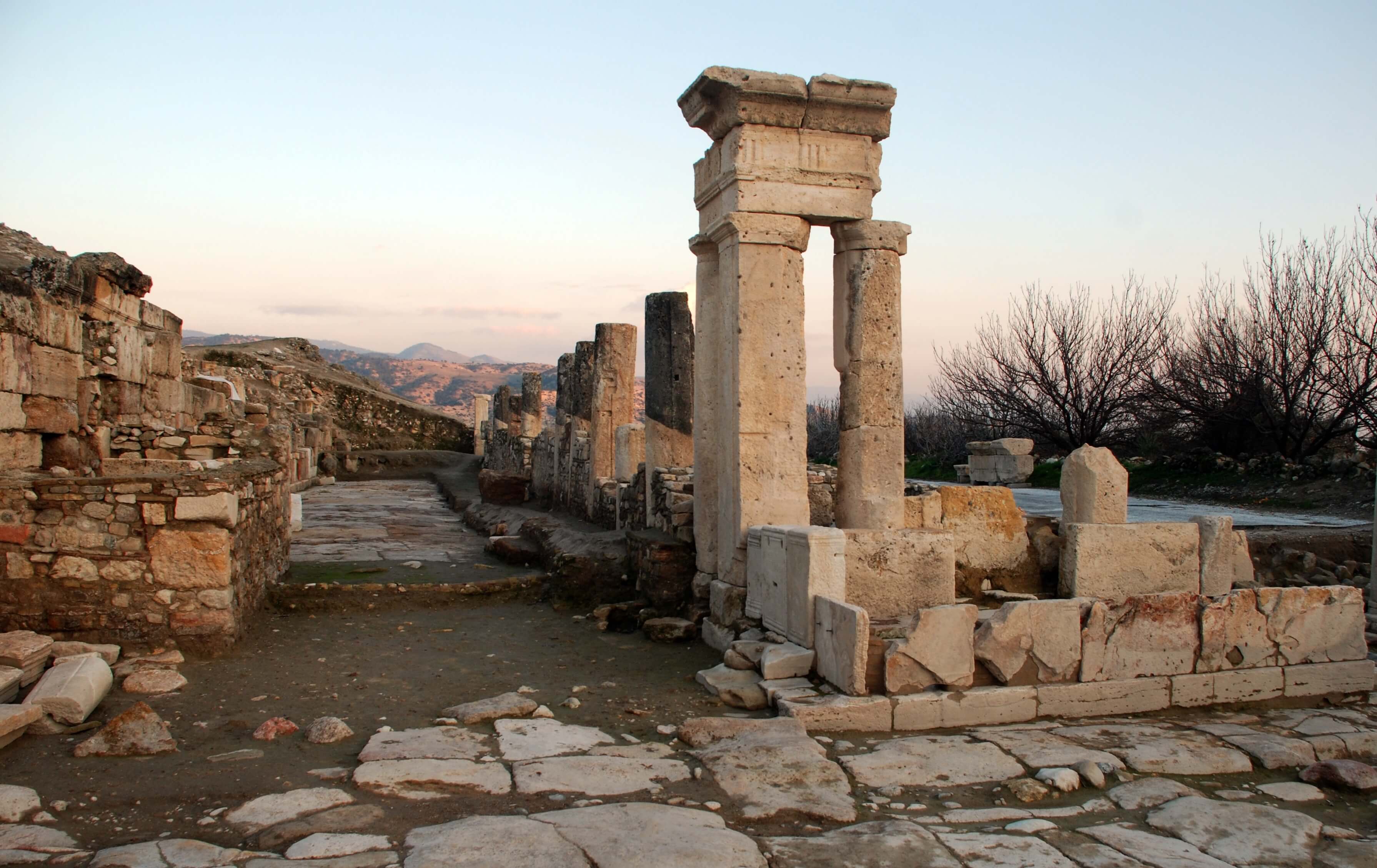
Tripolis Ancient City
Tripolis Antique City; It is located between the Yenicekent Town of Buldan District and the Menderes River which is 40 kilometers away from the center of Denizli.
The Tripolis Antique City has transports to the Central Anatolia and the Mediterranean with the Çürüksu Plain and valleys in the Aegean south east with the waters leading to the west and north. It is 30 kilometers from the ancient city of Laodikeia in the same period, which was founded in the Çürüksu Valley in the south of the city, and 20 kilometers from the ancient city of Hierapolis.
The exact information about the first establishment of the ancient city of Tripolis has not been reached yet. Some documents have been found in the Late Hellenistic period, which are called Tripolis, indicating that the first foundation was by Lydians. But in some sources it is stated that Apollonia is the first name.
Despite being located in the ancient city of Tripolis, Lidya City, the important border that provides access to Phrygia and Karya regions is confronted as one of the agricultural and commercial centers. It is among the richest cities of the region with its establishment style and urbanism understanding, which is one of the cities covering a large part of the Çürüksu Plain, blessed with the alluvial lands carried by the waters of the Menderes River and the Çürüksu Stream.
Although the first foundation of Tripolis was in Lidyalılar time, the remains on the surface carry Roman and Byzantine architectural features and building examples in style.
Tripolis Antique City BC II. With hundreds of years and M.S. In the mid-1st century and IV. Many earthquakes and wars in the middle of a hundred years have been very damaged because of it. The city lives the most magnificent period in Roman times. The first excavations were carried out in the main cave of the Tripolis Antique City in 1993 and the Museum Directorate was excavated in 2007 after a break.
Major Constructions of Tripolis Ancient City
Tripolis Antique Theater: It was built in the center of the city’s current settlement. It was built in three parts, in Roman architectural style, Greek theater type, according to Araz.
Chapter 1 (Cavea): It is divided into three diazomas and built as a semicircle. The seating sections towards the orchestra section have been completely destroyed. The top and sides of the cavea have covered vaulted outlets. The seating stones, which have a capacity of about 8,000 people, are made of large marble pieces.
Chapter 2 (Orchestra): This section is completely underground and there is not much information available.
Chapter 3 (Stage and Stage Building): The upper structure of the stage building is ruined to the inside and outside. A few of the left and right retaining walls of the stage building are visible on the surface.
Tripolis Bath
Apart from the city walls that surround the city in the late period, there is a flat area 200 meters west of Tripolis Theater. There are 5 sections between the sections that are provided with vaults and large niches. Protecting the tradition of the typical Roman baths, the substructure and walls are made from cut-away travertine block material.
City Building
The City Building, which is a large structure measuring 40 x 65 meters, is located about 200 m south of the bath and the upper part is completely demolished. The city walls adjacent to the western wall of the structure, which is characteristic of Roman architecture, continue.
Structure with Aps
The apse is built on the inside of the rectangular structure with the upper part completely collapsed and it is located in the northern wall. Therefore, this structure is called the apse structure.
Castle and Walls
During the Late Roman and Byzantine eras, the city was surrounded by city walls, supported by bastions, watchtowers and thick walls. The city walls connecting to the tower on the highest hill in the north of the city are important for the security of the city and the high tower there is used to observe the danger from outside.
Waterways
Although the city was on the edge of the Menders River, the city supplied water from the spring water near the southern county, which is 25 kilometers away. The water was brought to the city with tunnels, tunnels and arches built on mountainous and rough terrain.
Necropolis
It is located on the eastern and southern slopes of the city. There are many rock tombs carved into steep and steep rocks here. There are burials in the lower part of the podium, and sarcophagi in the upper part.













